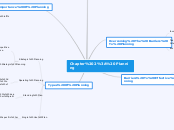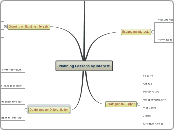PCK
EXA- DRAMA LESSON
Assessment
Formative Assesment
Creating a "class elephant" by collating ideas from the whole class and taking votes encourages discussion and allows children to build on each others ideas.
Observation
Children will be observed using movement, facial expressions and voice to take on roles, for example:
- Waving their arm in front of their face to form an elephants trunk
- Walking slowly and stomping their feet to represent elephants moving
- Smiling or using wide, open facial expressions to represent happy emotions characters might be feeling
- Using their voice to make appropriate animals noises
Classroom Management
Time Management
The main bulk of this lesson is made up of smaller activities
so timings have to be accurate and succinct in order to ensure lesson flows well.
Ensure there is adequate time for a plenary as this supports children's ability to reflect on their learning (Philip, 2006)
This also supports the reflective practice
of the teacher as they can asses if children have achieved the Learning Intention.
Health and Safety
As this lesson will take place in an outdoor
space, health and safety measure must be considered.
- Set boundaries for children at the start of the lesson in order to keep them in teacher's line of sight.
- Have commands such as 'FREEZE' to grab children's attention before moving on to the next instruction.
- When children are moving independently, encourage children to keep to spaces away from others to avoid any accidental injuries.
Groupings
In the second part of the lesson, children will sit in mixed ability groups to encourage peer discussion and support.
lesson will be delivered to the whole class. Children will interact with each other in role as different characters.
Pedagogy
Child-Centred
Child-centred pedagogy can be incorporated into drama lessons in various ways- children can choose and develop their own characters, devise scripts and follow their own interests and passions.
Link to Enjoyment and Choice- Principles of Curriculum design.
Freeze Frame
the Freeze Frame or Tableaux strategy involves asking children to create a still picture or "scene" to represent something. For example: "Show me Elmer in the jungle"
Hot seating
This type of pedagogical strategy involves children asking each other questions and them responding in role as their character. This can also be used in tandem with the teacher in role pedagogy, where the children ask the teacher questions and they respond in role.
Teacher in role
"Teacher in Role" is a type of drama pedagogy that focuses on teacher participation WITH the pupils rather than simply directing them with instructions. This could be as simple as the teacher putting on a hat while pretending to be a character or making simple changes to their voice . This helps to engage pupils and immerse them in their learning.
Prendiville, F (2000) .‘Teacher in role’, Education 3-13, 28:2, 9-14, DOI: 10.1080/03004270085200141
Differentiation
Barriers to learning
As there will be a wide range of Additional Support Needs in my class, I have planned my lesson to cater for the most common needs in mainstream classrooms.
I will model examples for children and join in with them to keep them engaged.
I will use clear, concise language when giving instructions.
Autism Spectrum Disorder
Kempe and Tissot (2012) found that drama can be used to teach children with Autism important social skills that are essential in supporting them in later life. Although this paper is focused on a school that caters specifically for additional support needs children, this practice could be translated into mainstream classrooms.
ADHD
A study by Wen-Lung Chang & Wei-Ming Liu found that when drama therapy skills were implemented in classes of children with ADHD it had a positive effect on their social emotional development and furthered their social skills (2006).
English as an Additional Language (EAL)
EAL pupils sometimes struggle with instruction or participating in class discussions due to language barriers. in her report 'Raising Achievement of English as an Additional Language Pupils in Schools: Good Practice' Demie suggests that pedagogical strategies used in drama, such as role playing and movement games helps EAL children to build relationships and gives them a "safe space" to practice their english without feeling judged.
Social Emotional Development
Learning through drama helps children experiencing difficulty expressing how they feel to interact positively with others through group games and activities (Celume, 2020)
Resources
Open space- Gym hall, Playground etc
Musical instruments - Rain stick
Book
'Elmer' by David Mchee
Benchmarks
These benchmarks informed my Learning Intention and Success Criteria
SC- I can use my face, body and voice to show how the characters might be thinking or feeling.
- I can create my own elephant character and discuss howw they might look, think and feel.
LI- We are learning how to use our face, body and voice to become a range of different characters.
Originally I had two
LI's but changed this one
as it would be easier for early
years pupils to understand.
Inspired by a range of stimuli, I can express and communicate my ideas, thoughts and
feelings through drama.
EXA 0-13a / EXA 1-13a / EXA 2-13a
I enjoy creating, choosing
and accepting roles, using
movement, expression and
voice.
EXA 1-12a









